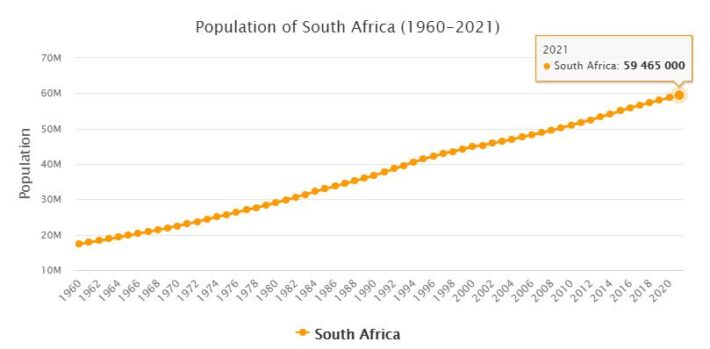Yearbook 2012
South Africa is a country located in southern part of Africa according to Abbreviationfinder. The ANC government in January celebrated its 100th anniversary as Africa’s oldest political liberation movement, but next month the party’s deep divide was clear. The ANC’s disciplinary committee determined the suspension of the youth union’s radical leader Julius Malema and excluded him from the party. Malema was considered to split the movement through his controversial statements, but he was backed by many grassroots for his criticism of the government’s failure to eradicate poverty and injustice.
Malema’s supporters were embittered, and in March there were violent shootings in Seshego in the Limpopo Province between supporters and opponents of the excluded youth leader.
There was frustration among many blacks that they did not get better during the ANC’s time in power. The miners were outraged that large profits in the mining industry did not result in higher wages, better housing and a safer working environment. In August, strikes broke out in the large mining district west of the capital, Pretoria. 3,000 workers at the platinum mine Marikana demanded a three-fold monthly salary corresponding to approximately SEK 10,000. The demand was driven by the newly formed radical union AMCU, which out-maneuvered the old and ANC-faithful mining union NUM.
The union rivalry led to gunfire, and ten workers, security guards and police were killed. The situation became increasingly tense, and the workers armed themselves with machetes, sticks and spears. When thousands of strikers failed to follow a call to disperse, the police opened fire with automatic weapons, killing 34 workers and injuring 78. It was the bloodiest police operation in South Africa since the Sharpeville massacre during the apartheid era. The whole community was shocked.
The police minister claimed that the security forces shot in self-defense after the miners shot them. It was met by upset reactions, especially as many of the victims were shot in the back. When the miner Lonmin gave the striking ultimatum to return to work or be laid off, the strike was extended.
The outrage among the victims’ relatives and among the public was also turned against the government. The hard-pressed President Jacob Zuma attacked the mining industry and threatened to revoke licenses unless workers’ conditions improved. A legal commission was appointed to investigate the massacre.
There was outrage nationally and internationally when charges were brought against the striking workers rather than against the shooting police. 270 workers were arrested and according to the prosecutor they had provoked the massacre. The arrested were charged with murder.
The people’s anger was directed at the judiciary but also against President Zuma’s government. The situation was exploited by Zuma’s harshest critic Julius Malema, who was present at the Marikana mine to show his support for the striking workers and the families of the victims.
The murder charge against the miners was withdrawn, and the arrested were released. At the same time, the wild strikes spread to more mines. The world’s largest mining company, Anglo American Platinum, was temporarily forced to close five platinum mines with 26,000 workers. Julius Malema traveled around and urged workers to make the mines impossible to control.
The mining industry accounted for 6% of South Africa’s GDP, the largest economy in Africa, and the finance minister labeled the strikes as “extremely dangerous” for the economy. The South African currency, the rand, fell in value, and foreign fund managers reduced ownership in South African commodity companies.
After a six-week strike, workers at the Marikana mine accepted wage increases of 11-22%, which was far less than they required. At Anglo American mines, the strikes continued, and in October about 75,000 workers were on strike in the mining industry. New violence occurred, a worker was reported killed by police, many arrested and 12,000 strikers were fired by a mining company.
Julius Malema’s actions and popularity during the strike made him a growing headache for the ANC government. Malema, and many with him, therefore saw it as a political prosecution when he was brought to justice for corruption, fraud and money laundering. As he faithfully insulted President Zuma – “an uneducated leader of a banana republic” – on his way to trial, Malema was hailed by thousands of cheering supporters.
Malema’s accusations against President Zuma about corruption came to life when South African media published documents on Zuma’s luxury building complex for 250 million rand (close to 200 million SEK) in Nkandla in KwaZulu/ Natal. Zuma claimed that the taxpayers only paid for the security arrangements, but published documents showed that part of the Zuma family’s housing was paid for with tax money.
“Nkandlagate” led to growing criticism of Zuma from opposition and the general public. In a November poll, 36% of young people wanted to see the Vice President and ANC Secretary-General Kgalema Motlanthe as the next president, while 23% preferred Zuma. However, among the ANC’s traditional voters, especially in KwaZulu/Natal, support for Zuma was still strong. The ANC would elect a new chairman, and thus in effect the next president, at a party congress in December.
However, among the traditional voters of the ANC, especially in KwaZulu/Natal, support for Zuma was still strong, and at the party congress in December he was re-elected as ANC leader with 75% of the vote. The well-ordered entrepreneur and former union leader Cyril Ramaphosa was elected new second man in the party.
Population 2012
According to countryaah, the population of South Africa in 2012 was 55,386,256, ranking number 24 in the world. The population growth rate was 1.580% yearly, and the population density was 45.6573 people per km2.
